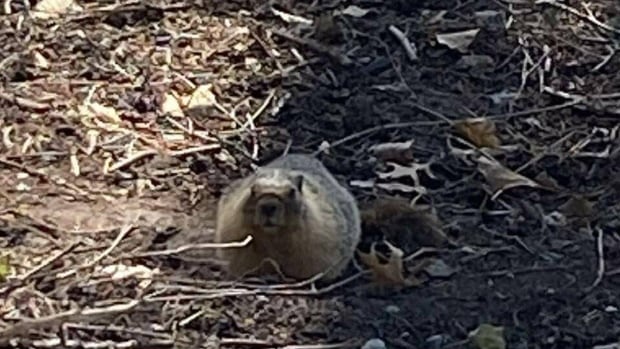Scientists from the Royal Ontario Museum (ROM) have finally uncovered secrets of a marine creature that lived roughly 505 million years ago.
Called Odaraia alata, this strange-looking critter lived in Earth’s earliest oceans at a time when there was a burst of life on the planet, often referred to as the Cambrian explosion.
Odaraia had been discovered more than 100 years ago in British Columbia’s Burgess Shale — an area that contains a treasure trove of fossils even to this day — but not a lot was known about it.
Even almost 70 years after its discovery, a 1981 study left in question such things as whether or not it had mandibles (jaw bone-like structures), how it fed and exactly how many legs it had, leaving paleontologists wondering just where it belonged in animal classification.
A new study published in the journal Proceedings B revealed that this 20-centimetre-long arthropod was not only a great swimmer with its 30 pairs of sea legs — which the authors discovered were quite complicated structures — but it did indeed have mandibles.
This puts Odaraia into a group called mandibulates, which are related to some animals and insects we see today, including crabs, centipedes, ants and mosquitoes. And it is one of the earliest of its kind.
It is these arthropods that make up more than 80 per cent of the animals we have today.

“We had a really good reconstruction of this animal in the 1980s, by Prof. Derek Briggs, who is now at Yale University,” said the paper’s lead author, Alejandro Izquierdo López, who was based at the ROM during this work as a PhD student at the University of Toronto.
“It’s not until now that we have the material evidence for these ideas. Now we know exactly what it was feeding on and how it was feeding.”
The ROM contains the largest collection of Cambrian fossils found in the Burgess Shale.
“Thanks to the work we have been doing at the ROM on amazing fossil animals … we already know a substantial amount about the early evolution of mandibulates,” study co-author Jean-Bernard Caron, the Richard M. Ivey Curator of Invertebrate Paleontology at the ROM, said in a release. “However, some other species had remained quite enigmatic, like Odaraia.”
A leg up
It turns out that Briggs had a lot right with this funky marine animal.
Not only did it only have mandibles, but it’s believed that Odaraia swam upside down to catch a meal. But how did it catch a meal with its taco-shaped carapace that covered its 30 sets of legs?
It turns out those legs are incredibly intricate.
“One of the most surprising things was that each leg has spines — very, very tiny spines. And it’s subdivided into, like, 20 different parts,” Izquierdo López explained. “So imagine every leg is subdivided into 20 different small parts. And each of these small parts has four big spines and then has a lot of smaller spines. So if you combine one leg in total, you will have around 80 spines per leg.”
It’s believed that these legs created a sort of net capable of capturing the small particles or small creatures that it happened upon.
And when it comes to how Odaraia consumed its catch, Izquierdo López said the manner would have been similar to the way tadpole shrimp eat today: It would swim upside down, collecting food particles, then bringing them up from the back to the front, with the mandibles chewing and grinding the food.

Understanding these early forms of life helps scientists better understand the life that we now see.
This group of mandibulates that Odaraia belonged to evolved and went on to diversify into three main groups, Izquierdo López said. Some went on land and became insects; another evolved into the centipedes we see today; and another remained in the oceans, developing into crustaceans like crabs, shrimps and even sea monkeys.
“It’s all about the weirdness and magical nature of everything that surrounds us,” he said.
“It’s sometimes just good to just sit down and wonder what happened 500 million years ago, what happened in the universe, our animals…. All of these questions are questions that make our life a little bit more meaningful.”
It’s a place thought to hold the secret to not just humanity but the Earth itself.
Nestled in the Rocky Mountains, Kootenay National is home to the Burgess Shale.
Considered one of the most well-preserved fossil locations in the world.
CBC joined a paleontologist as he led an expedition last summer in search of fossils of marine life dating back more than 500 million years.








